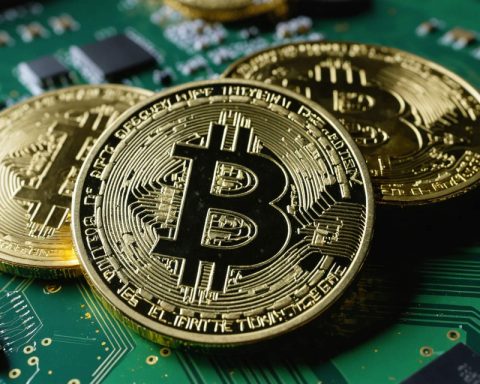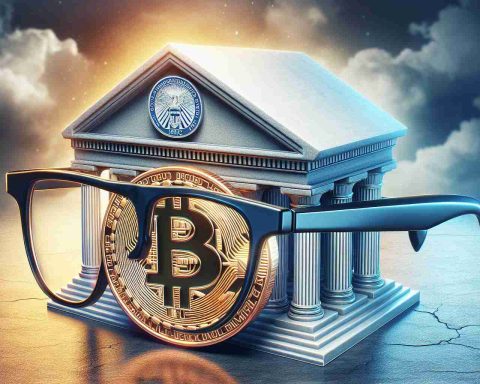- Bitcoin is gaining popularity as an inflation-resistant alternative to the traditional US Dollar, being seen as “digital gold.”
- Blockchain technology is transforming various sectors like finance, logistics, and healthcare, enhancing transparency and security.
- Decentralized finance (DeFi) and digital wallets are challenging traditional banking by offering transaction convenience without intermediaries.
- Cryptocurrencies and traditional fiat may coexist in the future, with innovations like stablecoins and CBDCs providing a balance between stability and technological growth.
In a rapidly evolving financial landscape, the relationship between Bitcoin and the US Dollar has become a subject of intense speculation and analysis. The emergence of blockchain technology and cryptocurrency poses a potential threat to traditional fiat currencies, raising questions about the future of finance.
Bitcoin’s Role as Digital Gold: Often referred to as “digital gold,” Bitcoin’s limited supply and decentralized nature make it an attractive alternative to the inflation-prone dollar. As central banks worldwide navigate economic crises, Bitcoin’s appeal grows stronger, serving as a hedge against potential hyperinflation.
Blockchain’s Growing Influence: Blockchain technology, which underpins Bitcoin, is reshaping multiple industries beyond finance. From logistics to healthcare, its transparency and security are revolutionizing data management. As it gains traction, reliance on digital currencies could increase, challenging the hegemony of traditional currencies like the dollar.
The Technological Shift: With the rise of decentralized finance (DeFi) platforms and digital wallets, the convenience of conducting transactions without intermediary banks is shifting public perception. This could eventually challenge the dollar’s status as the world’s dominant reserve currency.
Potential for Coexistence: While Bitcoin possesses qualities to challenge the dollar, the future might not be a zero-sum game. Innovations like stablecoins and central bank digital currencies (CBDCs) propose a future where fiat and cryptocurrencies coexist, maintaining stability while embracing technological advancements.
As technology continues to advance at a breathtaking pace, the dynamics between Bitcoin and the dollar will remain a pivotal narrative in shaping the future of global finance.
Bitcoin vs. US Dollar: The Battle for Financial Supremacy
Exploring the Dynamics of Bitcoin and the US Dollar
The evolving financial landscape has brought the relationship between Bitcoin and the US Dollar under intense scrutiny. As blockchain technology and cryptocurrency continue to gain traction, they present potential threats to traditional fiat currencies. This has led to pressing questions about the future of finance and the role these currencies will play.
1. How is Bitcoin redefining the concept of value in modern finance?
Bitcoin’s Role as Digital Gold: Bitcoin is often labeled the “digital gold” due to its limited supply and decentralized nature. These characteristics make it an attractive hedge against inflation, particularly as economic crises loom and central banks wrestle with monetary policy. The increasing interest in Bitcoin as a store of value positions it as a formidable alternative to traditional currencies prone to inflation, such as the US Dollar.
Blockchain’s Growing Influence: The technology underlying Bitcoin—blockchain—is extending its influence well beyond finance. With its applications in logistics, healthcare, and data management, blockchain is setting the stage for widespread adoption of digital currencies. This rise may eventually question the hegemony of established currencies like the dollar.
2. Could blockchain technology significantly disrupt the currency market, or is coexistence more likely?
The Technological Shift: The advent of decentralized finance (DeFi) platforms and digital wallets has made it easier to conduct transactions without relying on traditional banks. This shift might challenge the dominance of the US Dollar as the world’s reserve currency. However, the future could see a blend of currencies coexisting—fiat and digital. Stablecoins and central bank digital currencies (CBDCs) are being developed to offer stable digital alternatives that work alongside existing fiat systems.
Potential for Coexistence: It’s plausible that Bitcoin and the US Dollar may not be in direct competition as mutual exclusives. Innovations like stablecoins and CBDCs suggest a future where both traditional currencies and cryptocurrencies coexist. This hybrid system could ensure financial stability while embracing new technological advancements.
3. What are the security, sustainability, and market implications of increased Bitcoin adoption?
Security Aspects: As Bitcoin expands its influence, security remains a top concern. While blockchain technology is lauded for its security, there are ongoing challenges such as exchange vulnerabilities and wallet hacks that require robust security solutions.
Sustainability Concerns: Bitcoin’s energy consumption has sparked debates about its environmental impact. Mining operations are notoriously resource-heavy, prompting the cryptocurrency community to seek more sustainable methods of validation, such as Proof of Stake (PoS) protocols over Proof of Work (PoW).
Market Analysis and Future Predictions: The market forecasts for Bitcoin remain bullish, with growing institutional interest. However, regulatory developments could impact its trajectory. As Bitcoin continues to mature, its potential to reshape global finance grows, suggesting a complex interplay of innovation, regulation, and adoption.
For more insights into the evolution of cryptocurrency and its potential impacts, consider exploring resources from CoinDesk, Blockchain, and Forbes.











